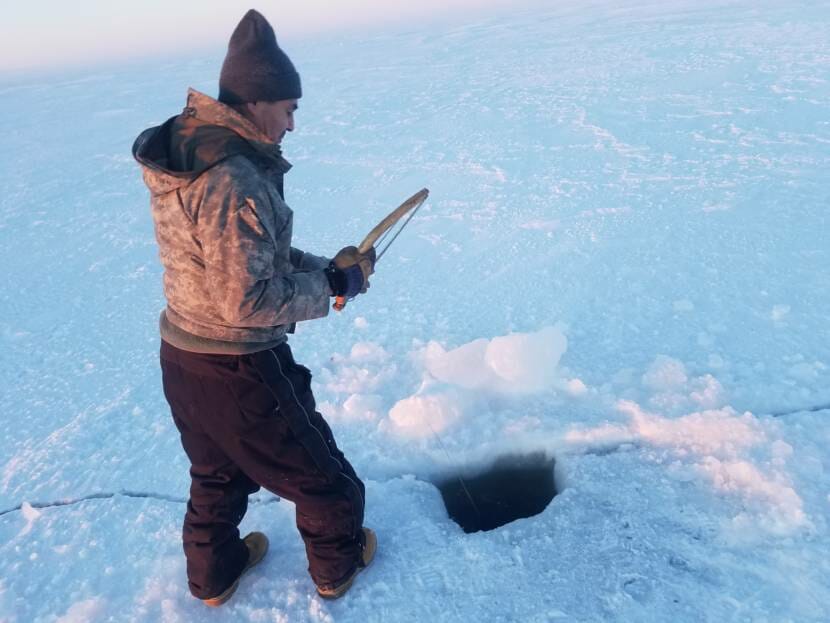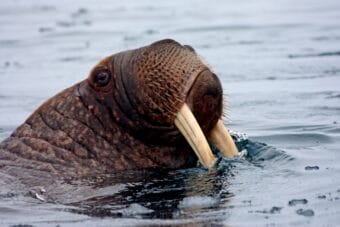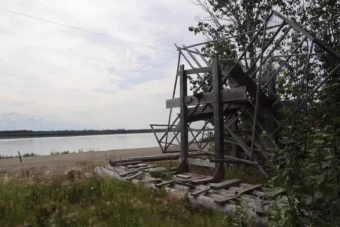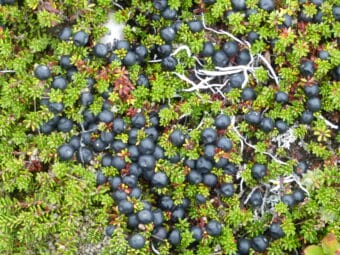
It’s no secret that climate change has affected how — and when — Alaskans harvest subsistence foods.
But what are the biggest impacts? How much has the warming climate changed things? And how are subsistence harvesters dealing with that change?
Well, a new study in the journal Ecology and Society aims to answer those questions, specifically as they pertain to the Northwest Alaska communities of Kotzebue and Kivalina.
Kristen Green is a co-author on the study and an Alaska-based Ph.D. student in environment and resources at Stanford University. She says a lot of research on subsistence adaptations due to climate change has been theoretical, so she and her fellow researchers went to interview the harvesters themselves.
Listen here:
The following transcript has been lightly edited for clarity.
Kristen Green: Well, since we were working with Alaska Native communities, it was really important to us to partner with them through every step of the research project. So, as we were first coming up with the idea, we started conversations with the Native Village of Kotzebue first and then later Kivalina, and trying to understand what questions might be meaningful to the community. From there, we started to focus on this idea of access and harvest, and developed a research protocol where we decided that we would interview expert harvesters throughout the region and ask them about what was most impacting the ways that they got to where they hunted and harvested. We asked them what changes they were seeing with respect to animal availability. And we also asked them how they’re responding to those changes and what their ideas were going forward.
Casey Grove: Just to be clear, what animals are we talking about?
Kristen Green: We asked people what was most important to them with respect to harvesting and caribou. The people there often refer to themselves as caribou people. It’s a symbolic animal for cultural and nutritional sustenance. So that was a of course a very important species. Ice seals, especially bearded seal, beluga whale are also really important. And as you get out to Kivalina, marine species become even more important based on their location. So marine mammals and fishes as well, particularly things like chum salmon and sheefish.
Casey Grove: So a pretty big range of things it sounds like.
Kristen Green: That’s right. harvesters in the region definitely have a range of food sources that they rely on because they do harvest seasonally throughout the year. And when you look at the seasonal harvest, you do see in every month of the year, people are harvesting things. And that’s actually one thing that we’ve found: some of those harvesting seasons are shifting a little bit relative to the past. And we believe that’s correlated with sea ice retreats.
Casey Grove: The season changing and how much?
Kristen Green: We saw changes in three key species. For bearded seal, harvest is now beginning in early May instead of late May. For chum salmon, harvest is now starting sometime in June, mid-June, when it used to start in early July. And for beluga whale, it’s now beginning in mid- to late May. And anywhere from two to three weeks earlier for all those species in that total window of harvest is also often more narrow and more unpredictable with some of the changes in the weather.
Casey Grove: Is the quantity of pounds of food is changing too?
Kristen Green: We didn’t specifically ask about pounds of food harvested in our study, it was outside the scope of our work. But we did hear from the two years that we asked people questions about this, that there were some years where it was much harder for them to get bearded seal. And we suspect that people are relying on other things to fill in for food that they’re not able to get — sometimes relying more on the fish in a year where they can’t get seals or they’re trading more with other communities or their families.
Casey Grove: And it kind of stands to reason if you have to spend more energy, more time or money trying to harvest the same amount of food that that’s just an overall greater difficulty than in the past.
Kristen Green: Absolutely. And that’s one of the things that we found is the amount of time you have to harvest, the amount of financial resources you have — whether it’s gasoline to be able to travel farther to find animals, or whether it’s access to multiple types of transportation. So having a snowmachine and boat and a four-wheeler, if you have access to all those, you may be able to access harvest more than someone who can’t.
Casey Grove: This study, it strikes me as very intensive on the talking, almost in a journalistic sort of way, that you’re you’re getting a lot of information by talking to people. And I wonder what was that like? I mean, it sounds like a lot of interviews and a lot of direct communication with folks?
Kristen Green: It was a really meaningful aspect of this study that people in Kivalina and in Kotzebue were so willing to share their stories with us and we spent time at people’s houses and fish camps, having coffee with folks and really hearing the stories of change that they’d experienced and also some of their optimism for the future. We also did look at some of the quantitative environmental trends to see how they compare to what the harvesters’ stories were and they both had similar stories about climate change. But I think the nuances, that when you’re talking to people, you’re able to gather a much broader context for climate change and potential ways to adapt to them than when you just are looking at the numbers.



